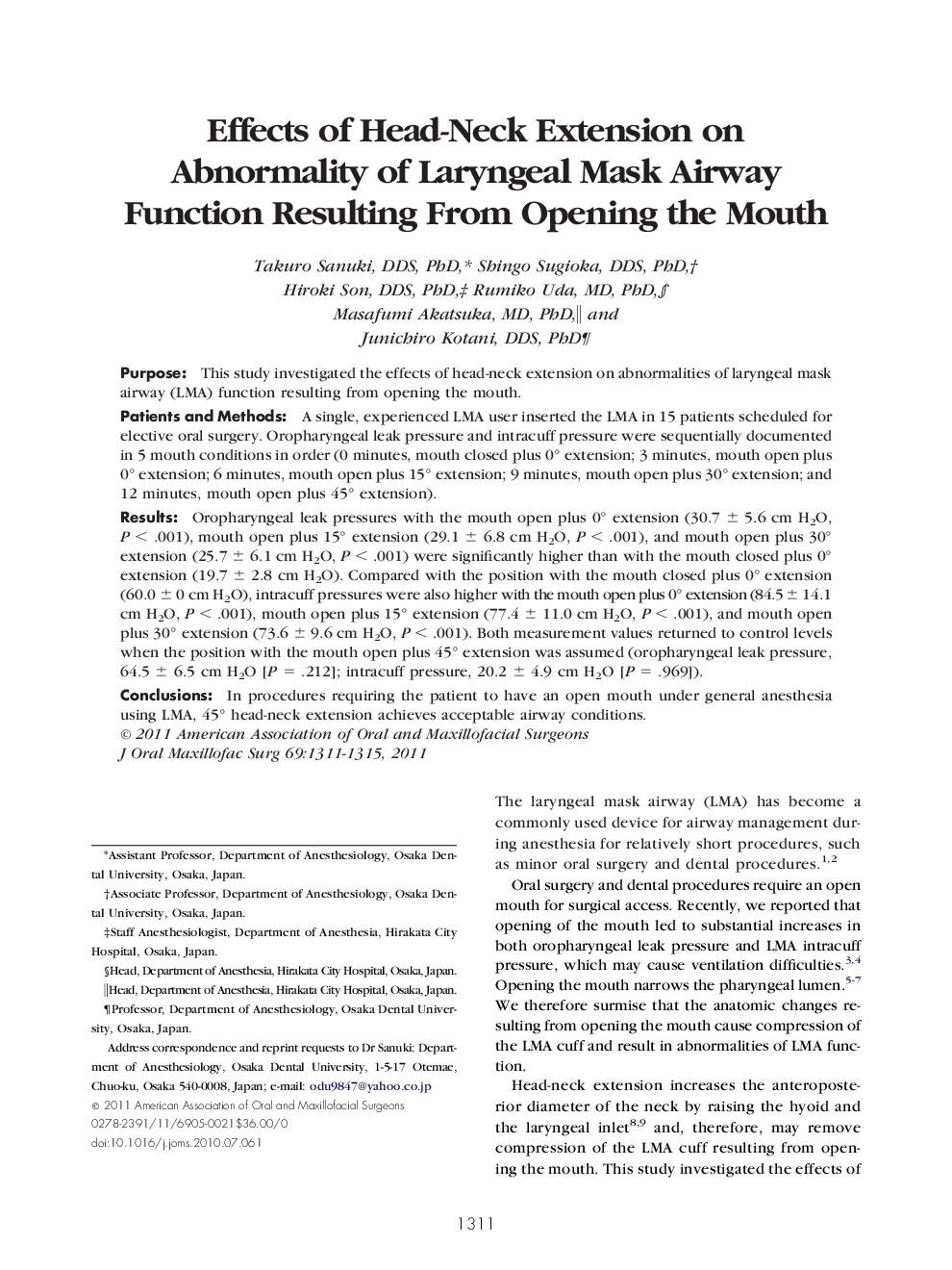| Article ID | Journal | Published Year | Pages | File Type |
|---|---|---|---|---|
| 3154641 | Journal of Oral and Maxillofacial Surgery | 2011 | 5 Pages |
PurposeThis study investigated the effects of head-neck extension on abnormalities of laryngeal mask airway (LMA) function resulting from opening the mouth.Patients and MethodsA single, experienced LMA user inserted the LMA in 15 patients scheduled for elective oral surgery. Oropharyngeal leak pressure and intracuff pressure were sequentially documented in 5 mouth conditions in order (0 minutes, mouth closed plus 0° extension; 3 minutes, mouth open plus 0° extension; 6 minutes, mouth open plus 15° extension; 9 minutes, mouth open plus 30° extension; and 12 minutes, mouth open plus 45° extension).ResultsOropharyngeal leak pressures with the mouth open plus 0° extension (30.7 ± 5.6 cm H2O, P < .001), mouth open plus 15° extension (29.1 ± 6.8 cm H2O, P < .001), and mouth open plus 30° extension (25.7 ± 6.1 cm H2O, P < .001) were significantly higher than with the mouth closed plus 0° extension (19.7 ± 2.8 cm H2O). Compared with the position with the mouth closed plus 0° extension (60.0 ± 0 cm H2O), intracuff pressures were also higher with the mouth open plus 0° extension (84.5 ± 14.1 cm H2O, P < .001), mouth open plus 15° extension (77.4 ± 11.0 cm H2O, P < .001), and mouth open plus 30° extension (73.6 ± 9.6 cm H2O, P < .001). Both measurement values returned to control levels when the position with the mouth open plus 45° extension was assumed (oropharyngeal leak pressure, 64.5 ± 6.5 cm H2O [P = .212]; intracuff pressure, 20.2 ± 4.9 cm H2O [P = .969]).ConclusionsIn procedures requiring the patient to have an open mouth under general anesthesia using LMA, 45° head-neck extension achieves acceptable airway conditions.
